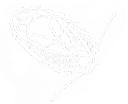Synura is a genus of colony-forming autotrophic organisms in which a variable number of cells are joined together at their posterior ends. Each cell is covered by imbricate silica scales, whose ultrastructure essentially defines the particular species. Several scale types occur on the same cell, depending on their position. Apart from the prevailing body scales, apical and rear scales can also be observed and are characterized by their different length to width ratios.
Scales have a perforated basal plate with an upturned rim and in most species an apical spine or similar structure. Most species have secondary ornamentation consisting of struts or reticulation. Scales originate in vesicles on the outer side of the chloroplast and during genesis are molded into shape by outbulgings from the chloroplast endoplasmic reticulum. When finished, they are extruded from the cell and arranged in a definite pattern.
Three sections could be recognized based on the different scale ultrastructure (Synura, Petersenianae, Lapponicae). Body scales of Synura, sect. Synura are characteristic by having a distal spine. Scales of Synura sect. Petersenianae could be differntiated by median keel which may end in a spinelike projection. Synura, sect. Lapponicae has simple, oval scales with a central knob.
 |
| A. General morphology of silica scale of Synura, section Synura (S. echinulata). B = basal plate; H = base plate hole; R = rim; S = distal spine; SS = secondary structure. B. General morphology of silica scale of Synura, section Petersenianae (S. petersenii). B = basal plate; H = base plate hole; K = keel; KT = keel tip; R = rim; S = struts; TF = transverse folds. C. Synura cell covered with armour of silica scales (S. petersenii) |
